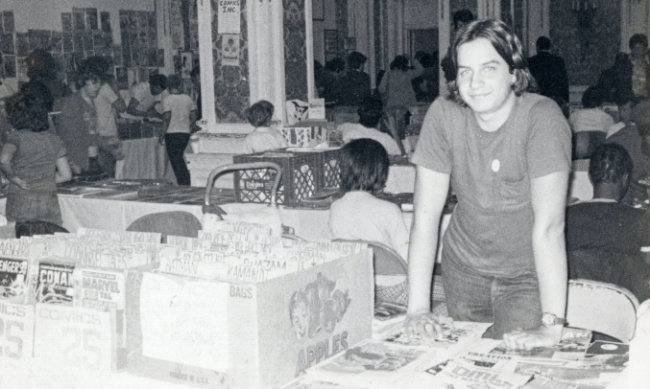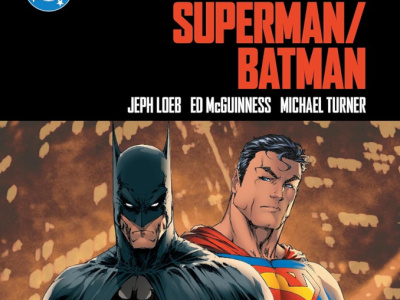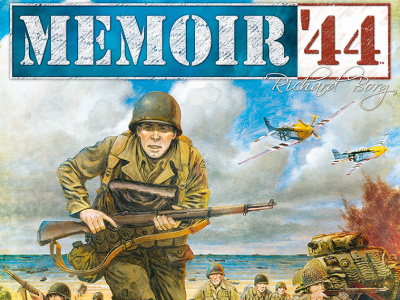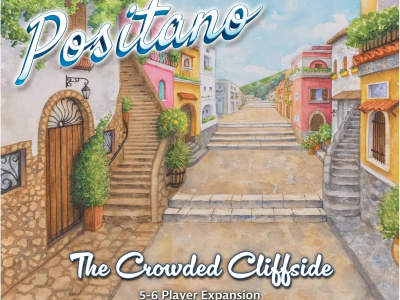
Teenager Greg Goldstein at a Seuling Comic Book Marketplace, with multiple copies of ‘OMAC’ #1, ‘Savage Sword’ #1, and ‘Iron Jaw’ #1 on his table.
Goldstein was one of the early retailers we interviewed for our article on the creation of the Direct Market (see "How the Drive to Get Comics Created the Direct Market").
This interview was conducted as part of ICv2’s Comics Direct Market 50th Anniversary celebration; for more, see "Comics Direct Market 50th Anniversary."
To watch a video of this interview, see "ICv2 Video Interview – Greg Goldstein."
We're here today with Greg Goldstein. Greg has a long career in the geek culture business, was a convention dealer and retailer early in his career, spent a good chunk of his time in the last decades with trading card companies, including Topps, InkWorks, and Upper Deck, and most recently in the comics business as publisher and president of IDW Publishing.
We're here today to talk about your early days in the comics business. Maybe you could start out by telling us, when did you first start selling comics?
I've been giving this some thought. I think I probably started selling comics as early as '72. The very first convention I went to was the 1971 Creation convention, which is the very first Creation [convention].
That was in New York, right?
That was in New York, Thanksgiving weekend of '71. My memory is that—well, I know it was my aunt who took me there. We were at a back issue place, and I was clearly collecting vigorously wherever I could possibly collect before that convention. I was staying with her in New York City on Thanksgiving weekend.
We were at a famous back issue place called JB Magazines. They sold primarily old magazines, but they had comic books too. That's when I found out about this Creation convention, so it was like a domino effect. She was very nice enough to take me the next day to Creation, which is where for the first time I got to interact with professionals and dealers and other people.
It's possible I may have been selling extra comics to my friends, as I would accumulate things and use a little bit of the (if there was any) profit to buy other comics. Somewhere between that Creation and the 1972 July 4th convention that Phil Seuling hosted was when I started attending his monthly conventions setting up as a "dealer" [laughs], a retailer, again, selling back issues, some of which might have been as recent as a couple of months old, but basically trying to buy them for nickels and dimes and selling them for quarters and 35 cents.
You were buying them from used bookstore places mostly?
Yeah, flea markets and garage sales. My father enjoyed for his own benefit going to these things, and so we'd get up on a weekend and we would go to these. I don't know, it's possible he and I might have set up at a flea market before I set up at a convention. I don't remember. I know that the tables at the monthly Phil conventions were very inexpensive. I know I got on some sort of waiting list, but actually got into the show pretty quickly, which was great.
Who were your customers? Who were the people that were coming to your table at these shows?
I'm sure there were some people that have had storied careers in comics. I can't remember specifically much beyond the color of the bills and the coins. Although I will say this, there was always trading to be done at these events.
They were people like me who might have missed an issue on a newsstand, or maybe their local newsstand or candy store just never even got an issue. That was a constant challenge for us in those [days]. You'd pay attention. You'd say, "OK, Spider‑Man comes out around the second or third week of the month." Then, somehow a month would come along, and either they all sold out the minute the guy opened the wires on the racks, or they just never got that issue for whatever reason. I learned pretty soon that there was a complete ad hoc to the distribution of comics, that the IDs, the Independent Distributors, were much more focused on weekly magazines and things like that.
Then how did you first hear about Phil Seuling distributing comics?
I was pretty much a regular at Phil's comic book show. He had potentially maybe taken a survey, or there was some casual way they had asked about interest. Would people be interested in carrying it? This was connecting the dots. This was shortly after Shazam #1, which was the return of Captain Marvel, came out from DC.
Anybody who was anybody trying to either buy or sell comic books went to their local newsstands and candy stores and tried to buy them all up because that was in the… I'm not going to say the beginning, but it was the early part of the speculative craze.
We knew that there's a better than 90% chance that you're going to be able to get more than 20 cents for Shazam #1 a couple of months later. It was obviously not just myself and my friends in the town of Long Beach, New York, but other people were doing this too.
Whether or not, and again, I'm connecting dots logically as opposed to without having any hardcore evidence, but clearly, books like that must have given a number of people the idea that there's got to be a better way to do this than just randomly haunting candy stores and newsstands.
My guess is there already were some sophisticated retailers who were buying directly from the independent distributors, probably even before those guys loaded their trucks. That would be the only way Supersnipe in New York City and some of these other early comic bookstores, some of them carried new comics, and that would be the only way they could have logically made sure they had an adequate supply, I would think.
Anyway, to get past this long‑windedness of my answer, at some point, Jonni Levas, who was an ex‑student of Phil’s, and ultimately they became involved in a relationship, she was walking around with a clipboard at one of these monthly conventions and said, "This is what we're doing. It's going to be called Sea Gate Distributors, and these are…"
The things I remember the most were you only had to order five copies of any book, and somebody else could possibly check me on this. I don't think there was much…, if there was any monthly minimum, it was very small. Certainly, for a kid scraping by on a couple of nickels and dimes on comic books and allowance [laughs], it couldn't have been very, very much.
You weren't even 18 then?
What's that? No, I was 13. I was a little punk. Always grateful that Phil put up with me and my friends. [laughs] As a side story to that, Phil's own daughters were our age and a little bit older, and for whatever reason, when they would go to the shows, we would all end up hanging together. I think Phil tolerated us for that reason.
They were taking orders?
I guess you were sort of signing up to be a dealer. I ended up with the number zero zero—I didn't realize—I must have been the somewhere between the first couple of people and the sixth number on the sheet because I ended up being account 0006.
Check me on the memory here. I can't remember if they handed us an order sheet or if they just said, "OK, now that we have your information, your name and address, and whatnot, we'll mail you the order sheet." That all happened very quickly, late '73, early '74.
That's when he was changing from dealing under his own name to Sea Gate?
Yes, correct.
Had you been buying from Phil for anything, fanzines or anything before then?
Yes. Actually, Phil brought back issues with him. He brought fanzines. Levitz manned the fanzine table when I produced a couple of issues of my fanzine. Basically, you just had to split the money with Phil, and Paul would manage that part of the convention, which is cool. It's a pretty bad fanzine, I'm sorry to say, but it was available there.
What was that early experience of buying comics through Phil like?
It was interesting because the early solicitations didn't have all the publishers on them. My earliest memories are DC and Warren, and then I'm pretty sure Marvel came in fairly quickly, but I don't think they came in at launch.
I think that's right.
Yeah, they came in pretty quickly. Clearly, they saw an opportunity, and Phil was a good, among many things, he was a good entrepreneur. I'm sure once he had the DC deal in his pocket, I'm sure he went to the appropriate people in Marvel and said, "Hey, this seems to make sense."
Jim Warren was on board right away. Again, my memory is definitely the five‑copy minimum, but my memory is 40 percent off cover price.
I had two friends that wanted to do this with me. Basically, I said I would manage all the administrative stuff if they let me keep... If you do the math, three copies would've netted out to cover price basically out of the five, and so for doing the administrative work, I got to deliver them near-mint to mint copies, and I got to keep the extra copies.
You got the profit basically between Seuling and retail, in books.
Yes, in books. Right. [laughs] It's still common to this day at some comic book stores.
How did that change your business selling comics?
Well, [laughs] the internal battle I had was trying to figure out A, these were all new comics, and even at 13, 14 years old you know that some of them may have a long‑term demand and some of them wouldn't. I'm not trying to give myself too much credit here, and maybe somebody else suggested it to me, but I think I realized that it was going to be a long‑term play because from a collectible standpoint, once these books became available to anyone who opened an account, they were going to be a little bit less collectible because they were going to be easy to find. There was an instinct on my part that said, "OK, this is probably a long‑term play."
There were some books I ordered 10 copies of instead of just five, and there was an opportunity to bring some of those books to shows and sell them even at cover price and make a little bit of money. That worked out.
One of the early books I remember buying, and I didn't get a chance to look it up to see when it came out, was Warren started publishing reprints of Will Eisner's The Spirit stories. I remember that was a big deal to me, at least. Spirit #1 was a book that I ordered at least 10 copies of.
Then, I mentioned to you previously, I'm pretty sure I got some extra copies of some of the Atlas books, Atlas Seaboard, the company that was started by Marvin Goodman’s son Chip. They probably did the deal from the outset. They weren't around very long, so by the time you got some number ones, most of the books were canceled.
How did you get the comics? Did they mail them to you, or what?
They did. I'm going to guess they were UPS. They were pretty well packed. I do remember that. The whole thing was very professional for whatever an entrepreneur could do professionally in 1973 and 4.
We take nowadays, at least I do, we take things like Kinkos and Staples and all these great online benefits for granted. In those days, I assume everything was printed and copied probably on mimeograph form, and then Phil's team probably cut out the address and taped it on the package would be my guess.
Were you getting the comics before they were hitting the newsstand?
Yes, that was part of the allure was the fact that the schedule was completely different than the newsstand. That led to some interesting things later on, well after I was done with the business.
Thor #337, which came out in '83, and is Walter Simonson's reinvention of the Thor character, by then the direct market was a big deal, and those books sold out quickly. The really industrious knew when to start hitting the independent distributors and the newsstands to try and catch up to copies of that book. I remember that pretty well.
How were the shows evolving as comics became more available and Phil's shows maybe became a little bigger? You mentioned you were already seeing creators at Creation Con.
Yes, there were a handful of creators at Creation Con. Again, that '71 was the first, and Adam and Gary are only a handful of years older than me. They probably were about 16 at the time in that show. It was obvious they probably had help from their folks, but it was an incredible achievement.
By '72, I have to think there's legendary moments in comic book history, the 1972, and it had a name like Comic Art Convention, the Phil Seuling July 4th Convention, that was just a giant event where there were a lot of creators and publishers. New York still being the central hub of comic book publishing, it just seemed to be that everybody I'd ever heard about or everybody I'd wanted to meet somehow was at the convention.
To this day, when I opened my little autograph section of that book, I'm stunned at 12‑year‑old Greg and who I managed to meet and talk to, and hopefully not annoyed too much.
This doesn't happen very often, but goosebumps. [laughs]
Yeah.
Anyway, then you were also involved in retailing with a store a little bit later on. Can you talk a little bit about that?
Sure. I only stayed with Phil and Sea Gate, probably three years at the most. School and athletics and girls just sucked up my time. I was still reading comics, but I didn't really have time to deal with the administrative aspects of it. I stopped probably right around '77 which was the year I graduated high school. Yeah, I would've definitely been slowing down going to the monthly shows.
I never got out of comics completely and still managed to hunt them down in my upstate New York town. I was glad to learn recently that the store that I shopped at in Johnson City, New York, Fat Cat Books was still around.
Capital sold to them, I remember them.
Remember that name? Yeah. OK, cool. Like I said, I ended up… I knew all the people from the early days of the Seuling conventions, people who set up. My memory of how I got into comic book retail completely accidentally is during grad school, I would occasionally go up to... [laughs] this is an oxymoron, up to Lower Westchester, a suburb of New York City. I was driving by then, and I happened to pass this one store called Dragons Den one day. I went in, and I talked to the manager a little bit, and the place was a little bit of a mess, as unfortunately a lot of comic book stores were, but it didn't matter because it was there weren't comic book stores more than every 20, 30, 50 miles even in the New York metro area.
I found out that Joe and Pete Koch were involved in this store, and I had known Joe and Pete from the New York, the Seuling Convention days. They are a little bit older than I am, I think both are. They had a third brother Arne, who was also involved peripherally in comics too.
Anyway, I just became a collector fan at the store. Eventually, after a few years and I was working, they asked me if I would want to come into the business a little bit, maybe help them manage it a little bit more professionally. I did that for a few years.
Can you talk a little bit about the role of the Koch brothers? I remember them from my earliest days in the business, and they played an important role in dealing with bulk back issues, right?
Yeah. If you go back and look at the back pages of late '60s, early '70s comics, and you look at those classified ads, a good chunk of the people selling back‑issue comics were out of the New York metro area. There was Grand Books, there was Robert Bell, there was Howard Rogofsky.
Over time, the Koch brothers very smartly and aggressively started buying either excess stock from some of these places, or in fact, would just buy them out. There was a period when maybe Grand Book swallowed up Robert Bell, and maybe then the Koch brothers bought Grand Book. The order of events escapes me a little bit, but a lot of that was going on in the '80s as the business was changing a little bit. Joe was one of the first people certainly in the New York metro area to have a dedicated warehouse to selling these comic books and other pop culture items out of his warehouse.
Right around the time that I started going there, '82, '83, they bought a giant trading card closeout from somebody. I don't remember the name of who it was. Somebody in Connecticut. There were tons of really interesting older trading card things in there. They were on top of the different aspects of the whole pop culture collecting thing pretty early on.
Any general observations on the impact of the Direct Market on the business, which you've been witnessing for 50 years?
The one thing at least I couldn't have predicted… I don't know where Phil's head was when he and Jonni and some of the other people that started Sea Gate. I don't think any of us would've predicted that the Direct Market would've become the only market to buy comic books at.
That was supposed to be additive and a place where collectors could go and not worry about, again, the wire marks on the comics or the candy store owner who didn't bother to tell the guy to bring this month’s Spider‑Man or any of that stuff.
In my mind, I always saw it as an alternative form of distribution. Much the way underground comics were distributed, at least on the East Coast, which was primarily through head shops. In my mind, those undergrounds were always the early direct comics because the only place to buy them was in head shops, occasionally in conventions, or what have you. Those were being sold by distributors, wholesalers, whatever you want to call them. This felt like, "Oh, now we're going to have mainstream comic books sold in the same way." Ultimately the Direct Market supplanted it completely.
The question that I always wonder is, without the Direct Market, would that have happened? Would there be no mass? The 2023 answer is yes, it would've happened eventually anyway because this is San Diego, and I can barely find a magazine in this town.
It's a major market, and it's just there's certainly nothing that looks like a newsstand.
Occasionally they're at the supermarket or at the drugstore, but magazines are just not around, let alone comics. It's interesting. Would it have happened slower? I don't know.
I'm curious about the direction it would've taken in an alternate universe without the Direct Market, because then comic collectors would've only had one place to get their comics, and maybe that would've kept, for lack of a better word, the newsstand business afloat a little bit longer.
The analogy I use having spent, you mentioned earlier, I spent some time in trading cards, and one of the mistakes that Topps made in the '90s, maybe even as early as the '80s, was underestimating how many of their cards were being sold to collectors, even though they weren't selling direct to dealers. They weren't selling to them, but those collectors and those dealers were going to the candy wholesalers on their own and buying them.
In Topps' mind, this was a completely mass‑market product with a few oddball collectors chasing trading cards down, but the reality was much different. The reality was that collectors were just using the conventional distribution because there wasn't an alternative.
Well, thanks very much. Really appreciate your help in exploring this history.
You're quite welcome. Phil was a giant. He is been gone almost 40 years, and I miss him. He was a visionary in our business.








